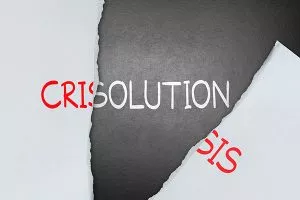The list of disasters that can befall a business is virtually endless, from fires to floods, hurricanes to hacker attacks. That's why many organizations have made disaster planning a priority. The primary goal: Keep the business running when bad things happen. In a competitive marketplace, being out of commission for any length of time may mean customer defections, contract penalties, regulatory fines, and lost sales. One key focus when building a disaster recovery plan is identifying methods for data backup and recovery. As more and more valuable data is stored by enterprises, it becomes critically important that they continually evaluate whether their data protection processes and infrastructure are sufficient. When reviewing backup and recovery solutions, enterprises need to consider both the features that will best serve the business, and the total cost of ownership (TCO) relative to the cost of a disaster. It's estimated that organizations spend up to $50,000 to deal with DDoS attacks and lose more than $100,000 per ransomware attack due to downtime and recovery costs. Do the math.

The first step for organizations is to look at their recovery time objective (RTO; the amount of time needed to restore applications and systems after a disaster interrupts the businesses). Gartner estimates that it costs $5,600 per minute for network downtime. The enterprise then needs to identify its recovery point objective (RPO; the maximum acceptable amount of data loss measured in time). Ultimately, these issues boil down to how much data you can afford to lose, and for how long. Finally, the issues below should be considered when establishing your data recovery plan:
- Initial costs What hardware or software will need to be purchased? What are the installation or software license costs? Will there be service upgrade fees?
- Critical applications and services How will the business continue to meet security and compliance obligations? How long will it take to recover data about key customers or vendors? Will employees in all locations be able to access recovered data at the same time?
- Data locations Consider that data may be on network servers, laptop computers, desktop computers, and wireless devices. What will be the total cost of recovering all the data, as well as costs for backing up hard copy records and information? What is the best way to extend the useful life of the data protection infrastructure?
- Technology inventory Get a handle on your servers and storage systems, network diagrams, data-center blueprints, and key personnel. What third-party services are currently being used? Will they be able to support the organization in a disaster? How quickly?
- Testing Who will test the solution? How often will such a test be performed? What is the cost of employee training for these tests? What about the training of outside partners? Testing is an important step and should not be ignored as costs may be higher down the road when critical errors are found.
- Maintenance What will be the cost of maintaining the solution in the long term? Who will do this maintenance, and how often? Can technology advances be blended seamlessly into data protection storage?
- Scalability Growing enterprises handle massive and growing amounts of data. The various kinds of data and varying accessibility to users can pose even more challenges when establishing a backup and recovery plan. Data recovery solutions must be able to scale with the business.
One more important note: when looking at data recovery and backup solutions, get input from all of your stakeholders to help you accurately gauge the cost of a disaster to your enterprise, and establish an accurate TCO for a solution that will work for your business.
You May Also Like
- Backup and Disaster Recovery Data Resilience
Introducing Arcserve 10000 Series Appliances: Rapid Deployment. Enhanced Security. Simplified Compliance.
December 10th, 2024 - Backup and Disaster Recovery Business Continuity Cloud Compliance Cybersecurity Data Protection Data Resilience Data Storage Ransomware
The Importance of Versatile Cloud Data Protection Support in a Multicloud World
December 3rd, 2024 - Backup and Disaster Recovery Business Continuity Cybersecurity
Tech Conversations - Beyond the Arc: Cyber Confidence for Business Leaders
December 2nd, 2024